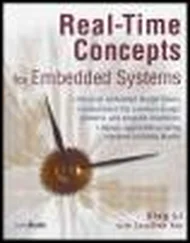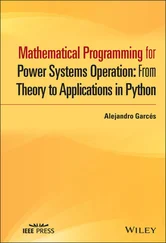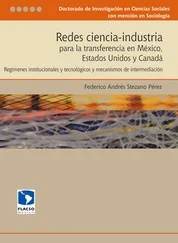The deployment of the SYNDEM grid architecture depends on the flexibility of power systems in generation and consumption. This is not a problem. Indeed, power systems worldwide are designed to be very flexible. For example, the UK Grid Code (National Grid, 2016) dictates that the system frequency shall be controlled within 49.5–50.5 Hz, i.e.  around the nominal frequency, and that generators and apparatus should be capable of operating continuously when the system frequency is within 49.0–51.0 Hz. For a
around the nominal frequency, and that generators and apparatus should be capable of operating continuously when the system frequency is within 49.0–51.0 Hz. For a  frequency droop slope, a 0.5 Hz change of frequency is equivalent to having additional reserve at the level of
frequency droop slope, a 0.5 Hz change of frequency is equivalent to having additional reserve at the level of  of the system capacity. Moreover, the SYNDEM grid architecture is able to release the inertia in wind turbines and large motors etc., which further increases the system inertia. If the reserve/inertia is still not enough, storage systems can be added. Note that the fast reaction of power electronic converters could also reduce the required level of inertia. Hence, it is envisioned that the flexibility of a SYNDEM smart grid is not a problem at all. Similarly, the normal operating range for voltage is
of the system capacity. Moreover, the SYNDEM grid architecture is able to release the inertia in wind turbines and large motors etc., which further increases the system inertia. If the reserve/inertia is still not enough, storage systems can be added. Note that the fast reaction of power electronic converters could also reduce the required level of inertia. Hence, it is envisioned that the flexibility of a SYNDEM smart grid is not a problem at all. Similarly, the normal operating range for voltage is  for 400 kV and
for 400 kV and  for 275 kV and 132 kV in the UK. There is plenty of flexibility in reactive power and voltage. Thus, the SYNDEM grid architecture offers a means to fully release the potential of the flexibility already in power systems, improving system stability and reliability.
for 275 kV and 132 kV in the UK. There is plenty of flexibility in reactive power and voltage. Thus, the SYNDEM grid architecture offers a means to fully release the potential of the flexibility already in power systems, improving system stability and reliability.
The architecture shown in Figure 2.5(a) empowers all players to directly take part in the regulation of system stability, which enhances system autonomy. This is consistent with the worldwide trend of increasing autonomy and declining hierarchy in different areas (Anderson and Brown 2010; Friedman 2005; Moore 2011).
The architecture shown in Figure 2.5(a) is lateral rather than hierarchical, although it allows the addition of hierarchical management layers on top of it if needed. Hence, it offers a technical solution to realize the lateral power envisioned in (Rifkin 2011). It has been widely recognized that steam engines are the machines that powered the first industrial revolution and electric machines are the machines that powered the second industrial revolution. It is likely that virtual synchronous machines are the machines that will power the third industrial revolution because it is fair to say that steam engines are mechanical, electric machines are half‐electrical and half‐mechanical, while virtual synchronous machines are fully electrical. This is summarized as shown in Table 2.1.
Table 2.1Machines that power the industrial revolutions.
| Industrial revolution |
Machines that power the revolution |
| The first |
Steam engines (mechanical) |
| The second |
Electric machines (electro‐mechanical) |
| The third |
Virtual synchronous machines (electrical)? |
2.4.2 Overall Architecture
As is well known, what makes a grid smart is the introduction of an ICT system to the electrical system of a power system. However, any unnecessary or improper use of ICT systems may lead to serious concerns on, e.g. cyber security and reliability, because cyber‐attacks could be launched by anybody, at any time, from anywhere. This is a systemic flaw of the current‐generation smart grid. Needless to say, the electrical system is primary and the ICT system is secondary. The electrical system is the foundation for providing electrical services while the role of the ICT system is to offer added value without causing additional problems. The electrical system should be able to work without the ICT system. Otherwise, the interdependence of electrical and ICT systems may open the door to unknown problems. In a SYNDEM grid, all SMs and VSMs have the same synchronization mechanism so there is no need to rely on an additional communication network for low‐level control and system regulation. Figure 2.5(b) illustrates the overall SYNDEM grid architecture, with the electrical system at the low level and the ICT system at the high level. It has clarified the relationship of the ICT system and the electrical system: various data from the electrical system can be passed on to the ICT system as indicated by the solid arrow but the instructions from the ICT system may or may not be passed to the electrical system as indicated by the dashed arrow, depending on the required level of security. The ICT system can be released from low‐level control to focus on high‐level functions, such as SCADA and market operations.
It is pertinent to clarify the unidirectional role of the ICT system in a SYNDEM smart grid and decouple it from the low‐level or local control of devices and equipment because the SYNDEM smart grid architecture inherently empowers all players to actively take part in the regulation of the grid. Each device or equipment is able to operate autonomously without relying on external communication, while having the capability to receive reference set‐points and instructions if needed. This significantly reduces the need for a high‐speed communication infrastructure and mitigates the concern of cyber security. The ICT system is no longer essential for the basic operation of the electrical system. Even if the ICT system at the high level is not working, the electrical system at the low level is able to operate and provide basic services autonomously. This provides the foundation to achieve cyberattack‐free, autonomous, renewable electric (CARE) power systems and completely solves the systemic flaw of power systems with regarding to cyber security.
The focus of this book is on the SYNDEM electrical system. For ICT systems, see e.g., (Ye et al. 2017).
The SYNDEM grid architecture is scalable and can be applied to power systems at different scales, from single‐node systems to million‐node systems.
When there is a need, small‐scale systems can be connected together, through a device called an energy bridge . Depending on the need, an energy bridge can be simply a circuit breaker, a transformer, a back‐to‐back power electronic converter, or their combination. Its main function is to connect and isolate two circuits. Its secondary functions may include protection, voltage conversion, and/or frequency conversion. If it is a back‐to‐back power electronic converter, then both sides can be operated as a VSM. If a part of the system is faulty, then it can be disconnected to isolate the faulty part of the system; after the fault is cleared, it can be re‐connected. Hence, while the SYNDEM grid architecture allows small‐scale grids to merge and form large‐scale grids, it also naturally allows large grids to break into small ones, making future power systems self‐organizable and autonomous.
Some typical scenarios of SYNDEM smart grids are outlined below.
Figure 2.6illustrates a SYNDEM home grid, which consists of a wind turbine VSM, a solar VSM, and some load VSMs. It can be operated with or without a utility grid, making it an ideal solution to advance energy freedom. It is possible to power homes with several solar panels or small wind turbines. This is particularly useful for disaster relief and remote areas without public utilities. As a result, the SYNDEM grid architecture could eventually bring energy freedom to individuals, providing the highest resiliency to each home.
Читать дальше

 around the nominal frequency, and that generators and apparatus should be capable of operating continuously when the system frequency is within 49.0–51.0 Hz. For a
around the nominal frequency, and that generators and apparatus should be capable of operating continuously when the system frequency is within 49.0–51.0 Hz. For a  frequency droop slope, a 0.5 Hz change of frequency is equivalent to having additional reserve at the level of
frequency droop slope, a 0.5 Hz change of frequency is equivalent to having additional reserve at the level of  of the system capacity. Moreover, the SYNDEM grid architecture is able to release the inertia in wind turbines and large motors etc., which further increases the system inertia. If the reserve/inertia is still not enough, storage systems can be added. Note that the fast reaction of power electronic converters could also reduce the required level of inertia. Hence, it is envisioned that the flexibility of a SYNDEM smart grid is not a problem at all. Similarly, the normal operating range for voltage is
of the system capacity. Moreover, the SYNDEM grid architecture is able to release the inertia in wind turbines and large motors etc., which further increases the system inertia. If the reserve/inertia is still not enough, storage systems can be added. Note that the fast reaction of power electronic converters could also reduce the required level of inertia. Hence, it is envisioned that the flexibility of a SYNDEM smart grid is not a problem at all. Similarly, the normal operating range for voltage is  for 400 kV and
for 400 kV and  for 275 kV and 132 kV in the UK. There is plenty of flexibility in reactive power and voltage. Thus, the SYNDEM grid architecture offers a means to fully release the potential of the flexibility already in power systems, improving system stability and reliability.
for 275 kV and 132 kV in the UK. There is plenty of flexibility in reactive power and voltage. Thus, the SYNDEM grid architecture offers a means to fully release the potential of the flexibility already in power systems, improving system stability and reliability.










